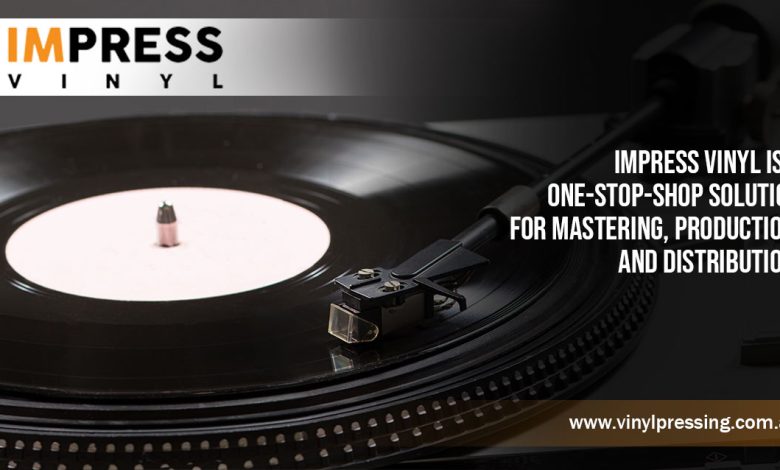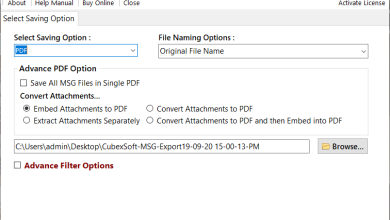
Music is one of the universal art forms globally and is a nearly constant part of our everyday lives. Know the process of pressing Vinyl Records. Who would have guessed that a way to play popular music 100 years ago would be roaring in popularity today by pressing vinyl records?
Impress produces custom vinyl records in Australia, allowing fans to cherish the moment of popping their favourite record down on the turntable by lying back on a cosy chair and hearing the warm sound of music.
But have you ever wondered how vinyl records work? How does the song we love get physically pressed into this beautiful physical medium? Let us take you through making custom vinyl records australia.
A Complete Guide to Pressing Vinyl Records In Australia
The audio file will be physically cut into a master disc. With these simple four steps, you can create your own custom vinyl records australia and worldwide. But don’t forget to select your desired custom record jacket and artwork production after pressing vinyl records.
Making the Lacquer Disc
Therefore Pressing vinyl records needs an excellent sounding source material. The first step in a custom vinyl pressing plant is to create the lacquer disc.
An experienced vinyl engineer takes a flat aluminium disc and coats it with a lacquer veneer. It is vital in this phase to keep the dust away from the surface of the lacquer sides to prevent any imperfections.
The lacquer disc has two sides, A & B. During the final pressing stage, labels are pasted on the record and bonded with the vinyl.
Recording Sound onto the Lacquer Disc
However the process of custom vinyl pressing start with an engineer placing the blank disc onto a lathe. This machine has a heated sapphire designed to engrave grooves into the lacquer surface of the disc.
As the recorded sound plays through the machine, the sapphire tips cut the recordings sound wave into the surface of the disc, with a small vacuum sucking up the lacquer.
Once the cutting is complete, the sapphire tip is lifted, and the vinyl engineer checks the disc for any defects. Although the recording has cut into the disc, the lacquer surface is far too delicate to repeat the same procedure.
These lacquer discs are used to test the sound transfer from the original recording onto the disc. The engineer or artist can reject the sound transfer if it is not perfect or continue the custom vinyl pressing process.
Preparing the Stamper
Create your own vinyl record in Australia by cutting the master record into two stampers representing the A & B side (each representing one side of the record) used in the record pressing process.
The lacquer disc is washed, sprayed with silver solution, and dipped in a tank of tin chloride. Through electroplating, tin molecules are drawn to the silver solution and leaving a metal layer formed on top. i.e. a reverse image of the master’s record used to press the actual records.
The lacquer disc with the negative image of the recording, also known as ‘mother plate’, i.e. grooves cut inwards, and the stamper is the positive, i.e. grooves coming outwards.
While vinyl pressing australia, you may have also noticed that this has just made a one-sided stamper. The process we’ve covered so far is for the A-side. Same procedure to be followed for B-side.
The Finished Vinyl
Similarly vinyl engineer will load the side A and side B stampers onto the press, PVC pellets will load the hopper, which feeds an extruder.
Therefore The vinyl pellets get heated up to ~350F, and hydraulic pressure pushes them together, squishing this PVC onto the outward-facing grooves of the stampers (the positive image of the sound recording) and pressing the record into existence.
As that stamper applies the heat and intense pressure, the vinyl fills all the grooves of the stamper, making the playable groove on the record. As that PVC material fills the grooves, similarly you can get excess on the edges of the trimmed record.
This process keeps repeating itself for the run of records on that stamper. Similarly The entire process usually takes about 30 seconds per record and is fully automated.
Impress vinyl, producing the best custom vinyl records in Australia. We offer a free CD run worth $400 with every vinyl pressing project. In-house engineers and designers will help you choose the best artwork for your jackets and vinyl sleeve dimensions with custom vinyl packaging.
Check out our line of PDF templates to help you put together the artwork for your next vinyl record release. Create your own vinyl record in Australia at affordable rates with a fast turnaround time, delivered all over Australia and then onto the world.
Types of Vinyl Records
12″ Vinyl Records
12″ Vinyl Records, the most in-demand size going around for albums, EPs and even singles. Looking for something special?We have a wide range of vinyl records, colours, patterns and finishes.
However Each record can hold up to to 14 minutes at 45 rpm and up to 24 minutes at 33 rpm per side. We press Vinyl records in 150 gram and 180 gram weights.
10″ Vinyl Records
10″ Vinyl Records are popular for EPs and shorter-length releases, with play times of 8 minutes at 45 rpm and up to 14 minutes at 33 rpm per side.
If you’re avoiding run-of-the-mill formats, this size will deliver. Comes in a standard weight of 110 grams and is available in our full range of colours and finishes.
7″ Vinyl Records
7″ Vinyl Records are unrivalled for single and promotional releases and has found its niche with collectors of vinyl.
It’s typical to put only one song per side, making this size perfectly sufficient. Its small-form factor weighs in at only 42 grams with an ability to hold 4.5 minutes per side at 45 rpm and 6 minutes at 33 rpm.
Vinyl Colours
What makes your vinyl pressing unique? The endless effects and variations that we can produce to your liking.
Our standard range: black, white, clear, red, dark and standard green, dark and standard blue, yellow, orange, pink, dark and standard purple, grey, gold and silver.
Opaque / Transparent
Therefore Most of our standard vinyl colours come in an opaque or transparent variant.
Check out exactly what’s on offer by hitting our pricing page or buzz our experts for more information.
Splatter
Contemplating a record with “splats” of colour throughout? This effect is a result of mixing colour vinyl pellets in with the vinyl puck during record pressing.
If you have a particular effect in mind, we’ll even vary the splatter slightly. Just let us know what (with pictures if possible) and we’ll recreate it.
Marbling
Much like our splatter (see above) but less pronounced, this effect can be produced on every one of our colour vinyl pressing australia.
We’ll help you make the perfect colour choice for an impressive result.
Black Smoke
Black smoke is one of the only stand alone effects we produce.
True to its name, the vinyl is created by combining black and clear vinyl, which produces a smokey visual throughout.
Half / Half
Torn between two colours? Why not both! We can create custom vinyl records in Australia made-up of two colours.
If you want a split down the middle or somewhere else, we’ll accommodate.
A little something to consider for your design: movement in the position of the colour divide will always occur.





